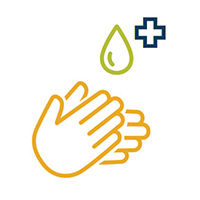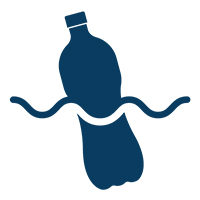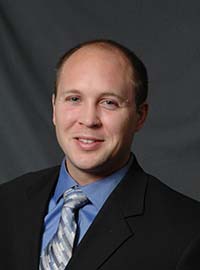PFAS is SO Last Year – Let’s Discuss Other Emerging Contaminants

In collaboration with the Environmental Bankers Association, Patrick Mahoney and Randy Copenhaver had the opportunity to act as guest speakers for the association’s monthly Risk Management Call. With over 150 participants in the session, Randy touched on the latest emerging contaminants that have the potential to affect commercial lenders, while Patrick focused on the ways environmental insurance can provide additional support in risk management strategies.
Emerging Contaminants
While PFAS has been top of mind for many in recent years, Randy discussed numerous other contaminants that have begun to play a part in everyday life and may pose as hazards to human and environmental health.

1,4-Dioxane
1,4-Dioxane is a synthetic solvent stabilizer additive commonly found in paint strippers, dyes, greases, antifreeze, aircraft deicing fluids, fungicide and insecticide fumigants and some consumer products such as shampoos, conditioners and dish soap. Although the EPA is still investigating, the chemical is likely a human carcinogen. Drinking water or groundwater standards have been established in 18 states and it is likely that the chemical will become regulated at the federal level in the future.

1,2,3-Trichloropropane (1,2,3-TCP)
1,2,3-TCP is a synthetic chlorinated hydrocarbon with high chemical stability which poses the threat of long-term viability in groundwater leading to potential vapor concerns. It is commonly used as an industrial solvent, agricultural soil fumigant impurity or chemical manufacturing intermediary. The Department of Health and Human Services and the EPA anticipate 1,2,3-TCP to be a human carcinogen, but are still evaluating. Several states have imposed drinking water or groundwater standards at PPT levels.

Ethylene Oxide (EtO)
EtO is a colorless, flammable, highly reactive gas commonly used in medical sterilization, chemical manufacturing, and agricultural fumigation. EtO air emissions began being regulated in the US in 1994, but in 2016 EPA studies raised the EtO air inhalation cancer risk by 30 times, prompting class action lawsuits from workers and nearby residents targeting EtO emitters. The main targets of lawsuits and EPA study are medical sterilization facilities and some chemical manufacturers.

6PPD-Quinone
6PPD-Quinone is a synthetic rubber additive used to prevent damage to tire rubber from ozone and oxygen. Over time as tires wear and tear from everyday use, this chemical breaks down on roads and parking lots which ultimately runs off into streams and other water sources. Studies showing the contaminant’s acute toxicity to Coho Salmon and several trout species has raised alarms with the public watchdog group, native tribes, scientists, and regulators. Human toxicity is unknown, but many additional human and ecological studies are underway.

Microplastics
With roughly 300 million tons of plastic produced each year, microplastics are defined as plastic pieces less than 5 millimeters in diameter. Plastic is not biodegradable, leading to large quantities released into the environment and most commonly into waterways, oceans and lakes. While it is difficult to determine the toxicity, the EPA and other regulatory boards are taking steps to establish drinking water standards.
Common Myths and Misconceptions of Environmental Insurance
While many common myths and misconceptions are associated with environmental insurance, Patrick had the opportunity to discuss why these opinions are often misguided.
“Provides No Meaningful Coverage”
Environmental insurance:
- Protects the Lender
- Maintains the property value after default
- Restores the property after a default has occurred
“Lender Insurance is Expensive”
Pricing and coverage have evolved since the inception of environmental policies:
- Provides broader coverage
- Longer policy terms are available
- Lower premiums
At Great American Environmental, we understand the intricacies of environmental exposures and can help protect commercial lenders against experiencing further loss – empowering financial institutions to not only be made whole in the default of a loan should there be a known environmental issue, but it also affords lenders several options to accomplish this.
- Allowing for creative loan negotiations (Brownfield Tax Credits)
- Repaying the principal balance of the insured loan
- Maintaining value of a performing property
- Providing the timely payment of estimated remediation cost
Learn more about how we can help mitigate the burden lenders may face!

Interested in having one of our subject matter experts speak at your next conference? Contact our team to set up some time to discuss our areas of expertise!


Patrick Mahoney, Divisional Vice President
Patrick is a Divisional Vice President for Great American’s Environmental Division. In his role, Patrick works directly with the Chief Underwriting Officer to oversee and develop the Division's comprehensive portfolio of customized products. In addition to managing the division’s strong underwriting discipline and fostering an industry-leading collaborative work environment, Patrick acts as a referral resource to the national and executive underwriting teams as well as serves as a lead underwriter for the division’s specialty products. Patrick has accumulated nearly 20 years working in the insurance field and has been with Great American’s Environmental Division since 2008. He is based out of the Exton, Pennsylvania main office.

Randy Copenhaver, Senior Loss Control Consultant
Randy is a Senior Loss Control Consultant with Great American’s Environmental Division, serving in the Technical Support Department. Utilizing his specialization in site remediation, he provides expertise in environmental evaluation to support underwriters in risk identification while crafting policies. Randy has accumulated over 18 years of geology, environmental consulting, and project management experience. He is a New Jersey Licensed Site Remediation Professional and Pennsylvania Professional Geologist. In addition to his extensive professional background, Randy currently is an active member of the Licensed Site Remediation Professional Association and Environmental Banker’s Association. He is based out of Great American’s Exton, Pennsylvania main office.